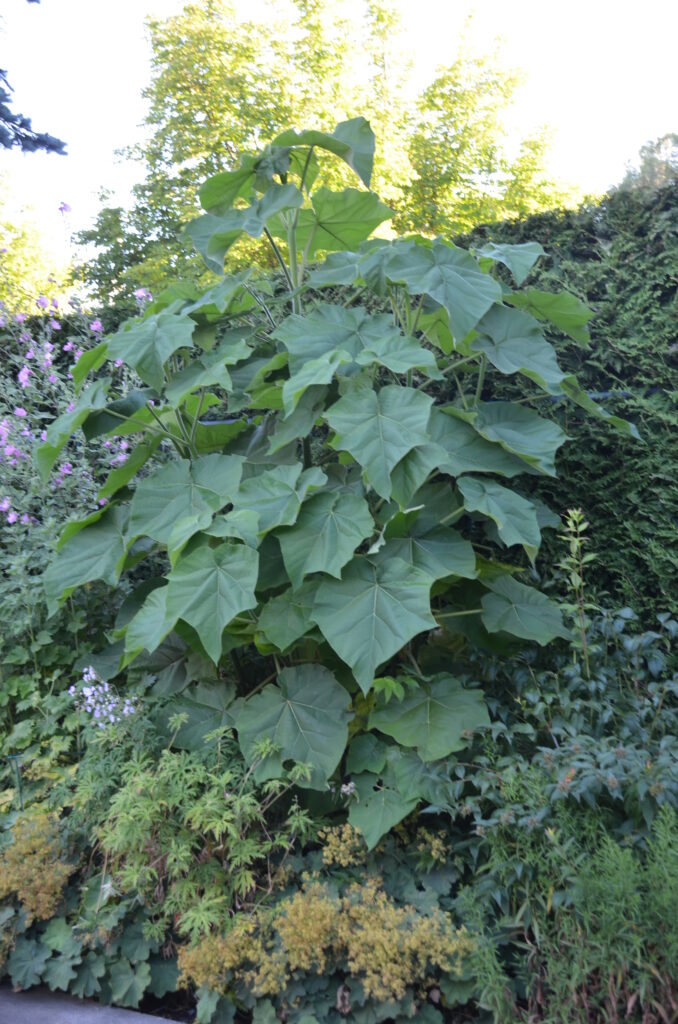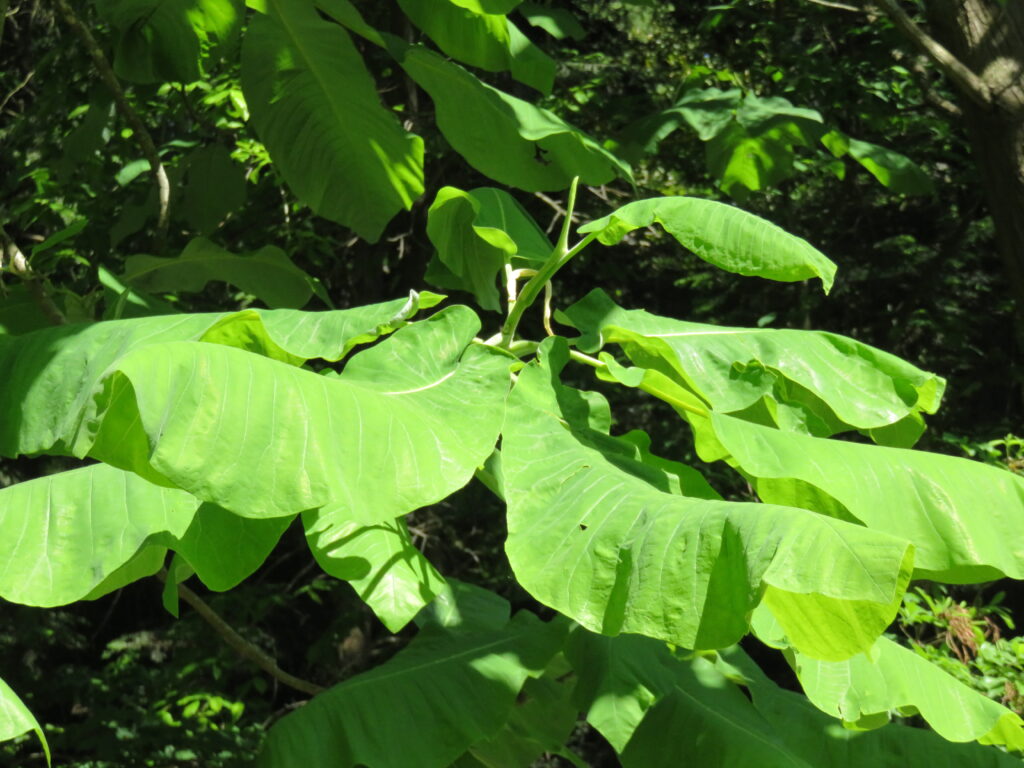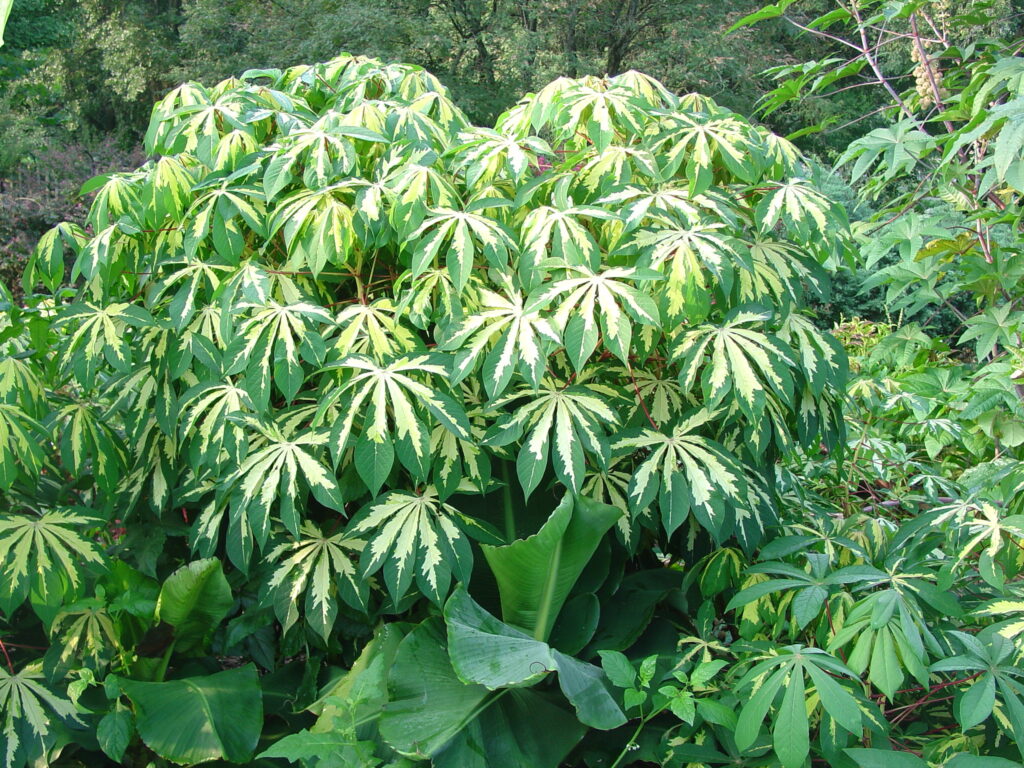Here are some ideas for designing a tropical landscape in your yard. Start with large leafy trees that are hardy in zones 6-7 include catalpa (Catalpa spp.), hickories (Carya spp.), some oaks (Quercus spp.), large leaf maple (Acer macrophylla), American sycamore (Platanus americana), American linden (Tilia americana), and Empress tree (Paulownia tomentosa). In zones 7-9 add Chinese parasol tree (Firmiana simplex), and in zones 8 -10 add Mexican sycamore (P. mexicana).

Big leaf magnolias are also tropical looking. These five underplanted magnolias are highly dependable trees in large landscapes — Bigleaf (Magnolia macrophylla), Ashe magnolia (M. ashei), (M. tripetala), and cucumber magnolia (M. accuminata). Four of five species are U.S. natives.

Have a small landscape? Cutback these young trees in late fall and new spring growth will sprout with much larger leaves and will not flower.
Hardy bananas (Musa basjoo) and angel trumpets (Brugmansia) thrive zone 7 hardy and in protected areas of zone 6b. Protect the roots and crowns with a winter blanket of mulch or pine needles. Both species dieback to the ground surface in fall.
GROW TROPICALS AS ANNUALS – Leafy tropical favorites such as papyrus (Cyperus papyrus), caricature plant (Graptophyllum pictum), elephant ears (Colocasia ‘Thailand Giant’), and variegated tapioca plant (Manihot esculenta ‘Variegata’) grow rapidly. Buy young vegetative plants to pre-started in a warm greenhouse @ minimum 60°F temps prior to safely planting outdoors when the frost threat has passed. Some of these tropical plants finish the growing season @ 4-8 feet high and wide and die off with the arrival of a wintry chill (USDA hardiness zones 9-11).


 Posted in
Posted in 
